In Situ Experimental Study of Cloud-Precipitation Interference by Low-Frequency Acoustic Waves
Abstract
:1. Introduction
2. Experimental Set-Up
2.1. Experimental Site
2.2. Experimental Devices
3. Data and Methodology
3.1. Test Procedure
3.2. Data Processing
4. Results and Discussion
4.1. Device Consistency Verification
4.2. Meteorological Background near the Site
4.3. Variations in the Precipitation Cloud System
4.4. Vertical Structure of Liquid Droplets
4.5. Horizontal Structure of Near-Ground Rainfall
5. Conclusions
Supplementary Materials
Author Contributions
Funding
Data Availability Statement
Acknowledgments
Conflicts of Interest
References
- Wang, G.; Li, T.; Li, J.; Wei, J.; Zhong, D. Analysis of sky water resources in the source region and the upper-middle region of the Yellow River basin. Yellow River 2016, 38, 79–82. [Google Scholar] [CrossRef]
- Tapiador, F.J.; Turk, F.J.; Petersen, W.; Hou, A.Y.; Garcia-Ortega, E.; Machado, L.A.T.; Angelis, C.F.; Salio, P.; Kidd, C.; Huffman, G.J.; et al. Global precipitation measurement: Methods, datasets and applications. Atmos. Res. 2012, 104, 70–97. [Google Scholar] [CrossRef]
- Wang, G.; Zhong, D.; Li, T.; Wei, J.; Huang, Y.; Fu, X.; Li, J.; Zhang, Y. Sky river: Discovery, concept, and implications for future research. Sci. Sin. Technol. 2016, 46, 649–656. [Google Scholar]
- Sarpong, K.; Xu, W.; Mensah-Akoto, J.; Neequaye, J. Waterscape, state and situation of China’s water resources. J. Geosci. Environ. Prot. 2020, 8, 26–51. [Google Scholar] [CrossRef]
- Shi, Y.; Wei, J.; Ren, Y.; Qiao, Z.; Li, Q.; Zhu, X.; Kang, B.; Pan, P.; Cao, J.; Wang, G. Investigation of precipitation characteristics under the action of acoustic waves in the source region of the Yellow River. J. Appl. Meteorol. Climatol. 2021, 60, 951–966. [Google Scholar] [CrossRef]
- Wei, J.; Qiu, J.; Li, T.; Huang, Y.; Qiao, Z.; Cao, J.; Zhong, D.; Wang, G. Cloud and precipitation interference by strong low-frequency sound wave. Sci. China-Technol. Sci. 2020, 63, 261–272. [Google Scholar] [CrossRef]
- Qiao, Z.; Wei, J.; Zhao, J.; Li, Q.; Shi, Y. Microphysical characteristics of cold cloud catalytic snowfall processes in the source region of the Yellow River in winter. J. Basic Sci. Eng. 2022, 30, 1121–1137. [Google Scholar] [CrossRef]
- Shi, Y.; Wei, J.; Qiao, Z.; Shen, W.; Yin, J.; Hou, M.; Ayantobo, O.O.; Wang, G. Investigation of strong acoustic interference on clouds and precipitation in the source region of the Yellow River using KaKu radar. Atmos. Res. 2022, 267, 105992. [Google Scholar] [CrossRef]
- Qiu, J.; Cressey, D. Meteorology: Taming the sky. Nature 2008, 453, 970–974. [Google Scholar] [CrossRef]
- Council, N.R. Critical Issues in Weather Modification Research, 1st ed.; The National Academies Press: Washington, DC, USA, 2003; p. 143. [Google Scholar] [CrossRef]
- Guo, X.L.; Zheng, G.G. Advances in weather modification from 1997 to 2007 in China. Adv. Atmos. Sci. 2009, 26, 240–252. [Google Scholar] [CrossRef]
- Guo, X.; Fang, C.; Lu, G.; Lou, X.; Su, Z.; Yu, Z.; Li, P.; Yang, Z. Progresses of weather modification technologies and applications in China from 2008 to 2018. J. Appl. Meteorol. Sci. 2019, 30, 641–650. [Google Scholar]
- Bai, W.; Shi, Y.; Zhao, Z.; Wei, J. Investigation of critical response characteristics of micro-droplets under the action of low-frequency acoustic waves. Front. Environ. Sci. 2022, 10, 972648. [Google Scholar] [CrossRef]
- Shi, Y.; Wei, J.; Bai, W.; Wang, G. Numerical investigations of acoustic agglomeration of liquid droplet using a coupled CFD-DEM model. Adv. Powder Technol. 2020, 31, 2394–2411. [Google Scholar] [CrossRef]
- Shi, Y.; Wei, J.; Qiu, J.; Chu, H.; Bai, W.; Wang, G. Numerical study of acoustic agglomeration process of droplet aerosol using a three-dimensional CFD-DEM coupled model. Powder Technol. 2020, 362, 37–53. [Google Scholar] [CrossRef]
- Lompar, M.; Curic, M.; Romanic, D.; Zou, L.D.; Liang, H.R. Precipitation enhancement by cloud seeding using the shell structured TiO2/NaCl aerosol as revealed by new model for cloud seeding experiments. Atmos. Res. 2018, 212, 202–212. [Google Scholar] [CrossRef]
- Axisa, D.; DeFelice, T.P. Modern and prospective technologies for weather modification activities: A look at integrating unmanned aircraft systems. Atmos. Res. 2016, 178, 114–124. [Google Scholar] [CrossRef]
- Yu, L.; Yao, Z. Studies on the microphysical characteristics of a stratiform cloud and its response to aircraft cloud seeding. Meteorol. Mon. 2009, 35, 8–25. [Google Scholar]
- DeFelice, T.P.; Axisa, D. Modern and prospective technologies for weather modification activities: Developing a framework for integrating autonomous unmanned aircraft systems. Atmos. Res. 2017, 193, 173–183. [Google Scholar] [CrossRef]
- Defelice, T.P.; Axisa, D. Developing the framework for integrating autonomous unmanned aircraft systems into cloud seeding activities. J. Aeronaut. Aerosp. Eng. 2016, 5, 1000172. [Google Scholar] [CrossRef]
- DeFelice, T.P.; Golden, J.; Griffith, D.; Woodley, W.; Rosenfeld, D.; Breed, D.; Solak, M.; Boe, B. Extra area effects of cloud seeding—An updated assessment. Atmos. Res. 2014, 135, 193–203. [Google Scholar] [CrossRef]
- Ma, S.; Zheng, G.; Wang, G.; Wu, L.; Zhang, X.; Pan, Y.; Li, Q. The study of miniature robot aircraft for weather modification. Adv. Earth Sci. 2006, 21, 545–550. [Google Scholar] [CrossRef]
- Wang, Y.; Li, D.; Li, C.; Liu, W.; Wang, X.; Wang, L.; Zhu, K. A Long-range controlled automated rocket operation system of weather modification. Meteorol. Mon. 2008, 34, 107–113. [Google Scholar]
- Chen, R.; Feng, D. The examination of the ice-nucleating efficiency of AgI in the JBR-56 rockets. Acta Meteorol. Sin. 1985, 43, 26–34. [Google Scholar]
- Morrison, H.; van Lier-Walqui, M.; Fridlind, A.M.; Grabowski, W.W.; Harrington, J.Y.; Hoose, C.; Korolev, A.; Kumjian, M.R.; Milbrandt, J.A.; Pawlowska, H.; et al. Confronting the challenge of modeling cloud and precipitation microphysics. J. Adv. Model. Earth Syst. 2020, 12, e2019MS001689. [Google Scholar] [CrossRef] [PubMed]
- Freeman, R. Ecological Kinetics of Silver in an Alpine Lake Ecosystem; Aquatic Toxicology, ASTM STP 66; Marking, L.L., Kimerle, R.A., Eds.; American Society for Testing and Materials: Conshohocken, PA, USA, 1979; pp. 342–358. [Google Scholar]
- Ćurić, M.; Janc, D. Wet deposition of the seeding agent after weather modification activities. Environ. Sci. Pollut. Res. 2013, 20, 6344–6350. [Google Scholar] [CrossRef]
- Williams, B.D.; Denhom, J.A. An assessment of the environmental toxicity of silver iodide-with reference to a cloud seeding trial in the snowy mountains of Australia. J. Weather Modificat. 2009, 41, 75–96. [Google Scholar] [CrossRef]
- Fajardo, C.; Costa, G.; Ortiz, L.T.; Nande, M.; Rodriguez-Membibre, M.L.; Martin, M.; Sanchez-Fortun, S. Potential risk of acute toxicity induced by AgI cloud seeding on soil and freshwater biota. Ecotoxicol. Environ. Saf. 2016, 133, 433–441. [Google Scholar] [CrossRef]
- Standler, R.B.; Vonnegut, B. Estimated possible effects of AgI cloud seeding on human health. J. Appl. Meteorol. Climatol. 1972, 11, 1388–1391. [Google Scholar] [CrossRef]
- Causapé, J.; Pey, J.; Orellana-Macías, J.M.; Reyes, J. Influence of hail suppression systems over silver content in the environment in Aragón (Spain). I: Rainfall and soils. Sci. Total Environ. 2021, 784, 147220. [Google Scholar] [CrossRef]
- Warburton, J.A.; Maher, C.T. The detection of silver in rainwater: Analysis of precipitation collected from cloud-seeding experiments. J. Appl. Meteorol. Climatol. 1965, 4, 560–564. [Google Scholar] [CrossRef]
- Jian, D.; Xiaofeng, L.; Hui, W.; Xueliang, G.; Jiming, L. Research progress on impact of AgI in weather modification operations on environment in related areas. Meteorol. Mon. 2020, 46, 257–268. [Google Scholar]
- Korneev, V.P.; Potapov, E.I.; Shchukin, G.G. Environmental aspects of cloud seeding. Russ. Meteorol. Hydrol. 2017, 42, 477–483. [Google Scholar] [CrossRef]
- Tulaikova, T.; Michtchenko, A.; Amirova, S. Acoustic Rains, 1st ed.; Grinchenko, S., Ed.; Fizmatkniga Publishing House: Moscow, Russia, 2010; p. 144. [Google Scholar] [CrossRef]
- Leisner, T.; Duft, D.; Mohler, O.; Saathoff, H.; Schnaiter, M.; Henin, S.; Stelmaszczyk, K.; Petrarca, M.; Delagrange, R.; Hao, Z.Q.; et al. Laser-induced plasma cloud interaction and ice multiplication under cirrus cloud conditions. Proc. Natl. Acad. Sci. USA 2013, 110, 10106–10110. [Google Scholar] [CrossRef] [PubMed]
- Henin, S.; Petit, Y.; Rohwetter, P.; Stelmaszczyk, K.; Hao, Z.Q.; Nakaema, W.M.; Vogel, A.; Pohl, T.; Schneider, F.; Kasparian, J.; et al. Field measurements suggest the mechanism of laser-assisted water condensation. Nat. Commun. 2011, 2, 456. [Google Scholar] [CrossRef] [Green Version]
- Tan, X.; Qiu, Y.H.; Yang, Y.; Liu, D.W.; Lu, X.P.; Pan, Y. Enhanced growth of single droplet by control of equivalent charge on droplet. IEEE Trans. Plasma Sci. 2016, 44, 2724–2728. [Google Scholar] [CrossRef]
- Vonnegut, B.; Maynard, K.; Sykes, W.G.; Moore, C.B. Technique for introducing low-density space charge into the atmosphere. J. Geophys. Res. 1961, 66, 823–830. [Google Scholar] [CrossRef]
- Zu, K.; Yao, Y.; Cai, M.; Zhao, F.; Cheng, D.L. Modeling and experimental study on acoustic agglomeration for dust particle removal. J. Aerosol Sci. 2017, 114, 62–76. [Google Scholar] [CrossRef]
- Zhang, G.; Ma, Z.; Shen, J.; Zhang, K.; Wang, J.; Chi, Z. Experimental study on eliminating fire smokes using acoustic agglomeration technology. J. Hazard. Mater. 2020, 382, 121089. [Google Scholar] [CrossRef]
- Vukovic, Z.R.; Curic, M. The acoustic–electric coalescence and the intensification of precipitation radar echoes in clouds. Atmos. Res. 1998, 47–48, 113–125. [Google Scholar] [CrossRef]
- Tulaikova, T.; Amirova, S. Acoustical method and device for precipitation enhancement inside natural clouds. Sci. Discov. 2015, 3, 18–25. [Google Scholar] [CrossRef]
- Tulaikova, T.; Li, T.; Wei, J.; Chen, Y.; Chen, G.; Ren, H.; Wang, J.; Zhang, L. Acoustic parameters to get precipitation enhancement inside atmospheric clouds. Sci. Int. Technol. 2020, 21, 46–60. [Google Scholar] [CrossRef]
- Tiwary, R. Acoustic Agglomeration of Micron and Submicron Fly-Ash Aerosols. Ph.D. Thesis, The Pennsylvania State University, State College, PA, USA, 1985. [Google Scholar]
- Wei, J.; Li, T.; Tamara, T.; Chen, G.; Wang, J.; Yan, D.; Chen, Y. The modification of atmospheric thermal flow to get high-altitude heating with additional lifting. Sci. Int. Technol. 2021, 22, 25–36. [Google Scholar] [CrossRef]
- Qiu, J.; Lu, H.; Zhao, Z.; Li, Q.; Pan, P.; Wang, J.; Ren, Y.; Cao, S.; Qiao, Z.; Cao, J.; et al. Evaluation the effect of acoustic raining field experiments in the source region of the Yellow River based on the analysis of the time structure of rain. J. Basic Sci. Eng. 2020, 28, 691–702. [Google Scholar] [CrossRef]
- Wang, M.; Chen, J.; Li, J.; Wang, J.; Xie, H. Statistic evaluation of low-frequency acoustic wave impact on rainfall stimulation. Stoch. Environ. Res. Risk Assess. 2022, 37, 611–623. [Google Scholar] [CrossRef]
- Markauskas, D.; Kačianauskas, R.; Maknickas, A. Numerical particle-based analysis of the effects responsible for acoustic particle agglomeration. Adv. Powder Technol. 2015, 6, 698–704. [Google Scholar] [CrossRef]
- Hoffmann, T.L.; Koopmann, G.H. Visualization of acoustic particle interaction and agglomeration: Theory and experiments. J. Acous. Soc. Am. 1996, 99, 2130–2141. [Google Scholar] [CrossRef]
- González, I.; Hoffmann, T.L.; Gallego, J. Visualization of hydrodynamic particle interactions: Validation of a numerical model. Acta Acust. United Acust. 2002, 88, 19–26. [Google Scholar]
- González, I.A.; Hoffmann, T.L.; Gallego, J.A. Precise measurements of particle entrainment in a standing-wave acoustic field between 20 and 3500 Hz. J. Aerosol Sci. 2000, 31, 1461–1468. [Google Scholar] [CrossRef]
- González, I.A.; Gallego-Juárez, J.A.; Riera, E. The influence of entrainment on acoustically induced interactions between aerosol particles—An experimental study. J. Aerosol Sci. 2003, 34, 1611–1631. [Google Scholar] [CrossRef]
- Hu, P.; Gu, X.; Ye, L.; Dong, G. Numerical-statistical method for precipitation enhancement effectiveness evaluation. Meteorol. Sci. Technol. 2005, 2, 189–192. [Google Scholar] [CrossRef]
- Kacianauskas, R.; Maknickas, A.; Vainorius, D. DEM analysis of acoustic wake agglomeration for mono-sized microparticles in the presence of gravitational effects. Granular Matter 2017, 19, 48. [Google Scholar] [CrossRef]
- Kacianauskas, R.; Rimsa, V.; Kaceniauskas, A.; Maknickas, A.; Vainorius, D.; Pacevic, R. Comparative DEM-CFD study of binary interaction and acoustic agglomeration of aerosol microparticles at low frequencies. Chem. Eng. Res. Des. 2018, 136, 548–563. [Google Scholar] [CrossRef]
- Zhang, G.; Zhang, L.; Wang, J.; Chi, Z. A new model for the acoustic wake effect in aerosol acoustic agglomeration processes. Appl. Math. Model. 2018, 61, 124–140. [Google Scholar] [CrossRef]
- Yamamoto, Y.; Potthoff, M.; Tanaka, T.; Kajishima, T.; Tsuji, Y. Large-eddy simulation of turbulent gas–particle flow in a vertical channel: Effect of considering inter-particle collisions. J. Fluid Mech. 2001, 442, 303–334. [Google Scholar] [CrossRef]
- Zhang, G.; Zhang, L.; Wang, J.; Chi, Z.; Hu, E. A new multiple-time-step three-dimensional discrete element modeling of aerosol acoustic agglomeration. Powder Technol. 2018, 323, 393–402. [Google Scholar] [CrossRef]
- Gao, Q. Numerical Simulation and Seeding Test on the Stratiform Precipitation around Beijing. Master’s Thesis, Chinese Academy of Meteorological Sciences, Beijing, China, 2010. [Google Scholar]
- Battan, L.J. Relationship between cloud base and initial radar echo. J. Appl. Meteorol. 1963, 2, 333–336. [Google Scholar] [CrossRef]
- Decker, W.L.; Chang, L.; Krause, G.F. An evaluation of the Whitetop cloud seeding experiment through a covariance analysis. J. Appl. Meteorol. 1971, 10, 1193–1197. [Google Scholar] [CrossRef]
- Braham, R.R., Jr.; Flueck, J.A. Some Results of the Whitetop Experiment. In Proceedings of the Second National Conference Weather Modification, Santa Barbara, California, American Meteorological Society, Santa Barbara, CA, USA, 6–9 April 1970; pp. 176–179. [Google Scholar]
- Rangno, A.L.; Robbs, P.V. A new look at the Israeli cloud seeding experiments. J. Appl. Meteorol. 1995, 34, 1169–1193. [Google Scholar] [CrossRef]
- Hobbs, P.V.; Radke, L.F. The nature of winter clouds and precipitation in the Cascade Mountains and their modification by artificial seeding. Part II: Techniques for the physical evaluation of seeding. J. Appl. Meteorol. 1975, 14, 805–818. [Google Scholar] [CrossRef]
- Koloskov, B.; Zimin, B.; Beliaev, V.; Seregin, Y.; Chernikov, A.; Petrov, V.; Valdés, M.; Martínez, D.; Pérez, C.A.; Puente, G. Results of experiments on convective precipitation enhancement in the Camaguey experimental area, Cuba. J. Appl. Meteorol. 1996, 35, 1524–1534. [Google Scholar] [CrossRef]
- Levin, Z.; Halfon, N.; Alpert, P. Reassessment of rain enhancement experiments and operations in Israel including synoptic considerations. Atmos. Res. 2010, 97, 513–525. [Google Scholar] [CrossRef]
- Sassen, K. Deep orographic cloud structure and composition derived from comprehensive remote sensing measurements. J. Clim. Appl. Meteorol. 1984, 23, 568–583. [Google Scholar] [CrossRef]
- Zeng, G.; Wu, M.; Lin, C.; Liu, X. A comprehensive evaluation of the effect of artificial precipitation in Gutian reservoir area. Q. J. Appl. Meteorol. 1993, 4, 154–161. [Google Scholar]
- Long, A.B.; Huggins, A.W. Australian Winter Storms Experiment (AWSE) I: Supercooled liquid water and precipitation-enhancement opportunities. J. Appl. Meteorol. 1992, 31, 1041–1055. [Google Scholar] [CrossRef]
- List, R. Weather modification—A scenario for the future. Bull. Am. Meteorol. Soc. 2004, 85, 51–64. [Google Scholar] [CrossRef]
- Shi, Y.; Wei, J.; Li, Q.; Yang, H.; Qiao, Z.; Ren, Y.; Ni, S.; He, J.; Shen, W.; Cao, S.; et al. Investigation of vertical microphysical characteristics of precipitation under the action of low-frequency acoustic waves. Atmos. Res. 2021, 249, 105283. [Google Scholar] [CrossRef]
- Wang, Y.; Yao, Z.; Lin, C. Analysis of radar echoes at different heights before and after precipitation enhancement. J. Arid Meteorol. 2018, 36, 644–651. [Google Scholar]
- Zhang, Z.; Qiu, C.; Tang, L. Application of Doppler weather radar to effectiveness evaluation of precipitation enhancement. Meteorol. Sci. Technol. 2011, 39, 703–708. [Google Scholar] [CrossRef]
- Li, Q.; Wei, J.; Yin, J.; Qiao, Z.; Cao, J.; Shi, Y. Microphysical characteristics of raindrop size distribution and implications for radar rainfall estimation over the northeastern Tibetan Plateau. J. Geophys. Res. Atmos. 2022, 127, e2021JD035575. [Google Scholar] [CrossRef]
- Cai, Z. Characteristics of Stratiform Cloud Precipitation Structure and the Comprehensive Observation Analysis of Rainfall Enhencement Operation by Aircraft. Master’s Thesis, Nanjing University of Information Science and Technology, Nanjing, China, 2012. [Google Scholar]
- Cao, J.; Qiu, J.; Wei, J.; Wang, J.; Zhao, Z. Characterizing low-frequency strong acoustic emission and propagation of the fluidic air-modulated speaker. J. Qinghai Univ. 2019, 37, 49–55. [Google Scholar] [CrossRef]

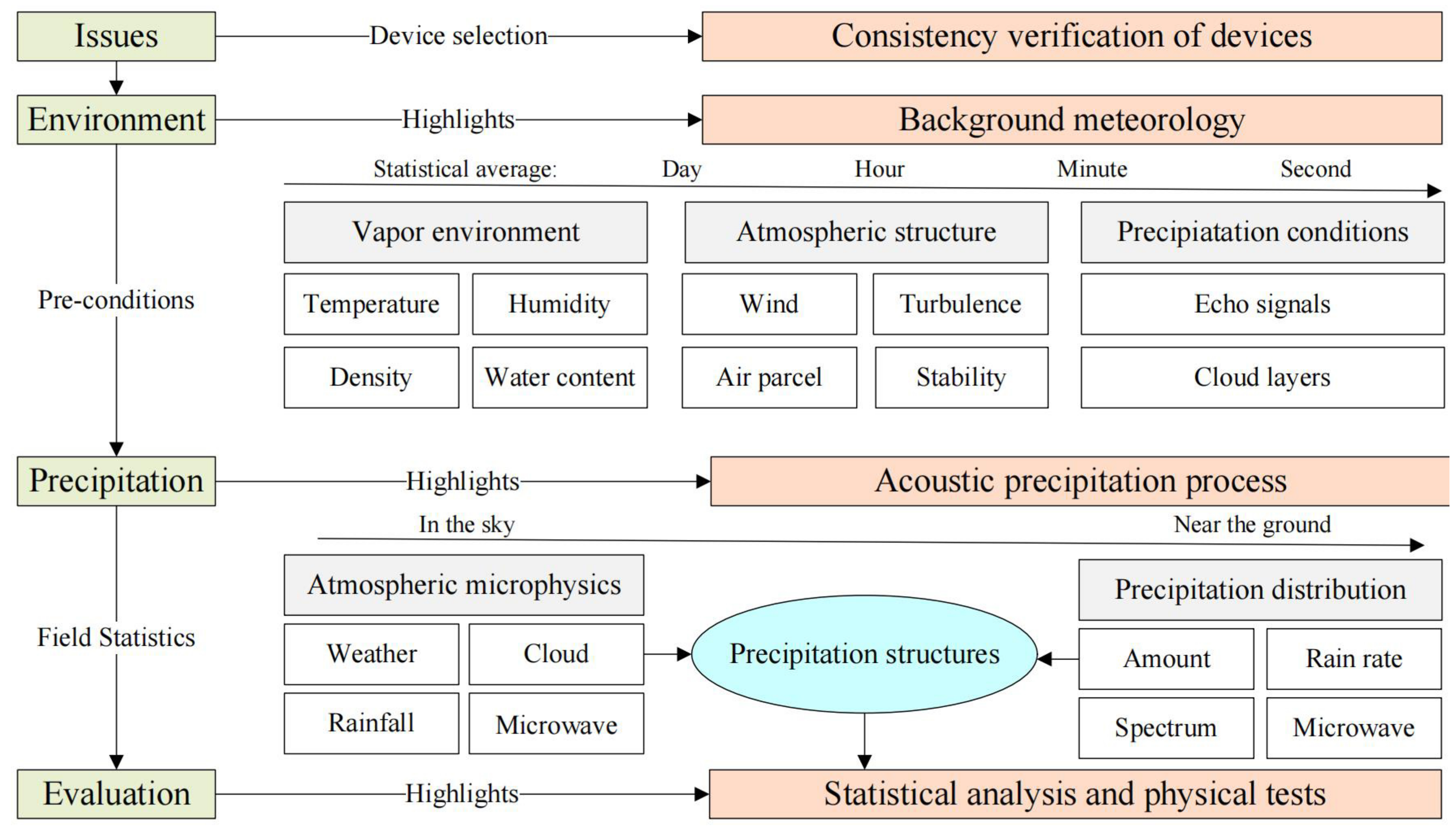
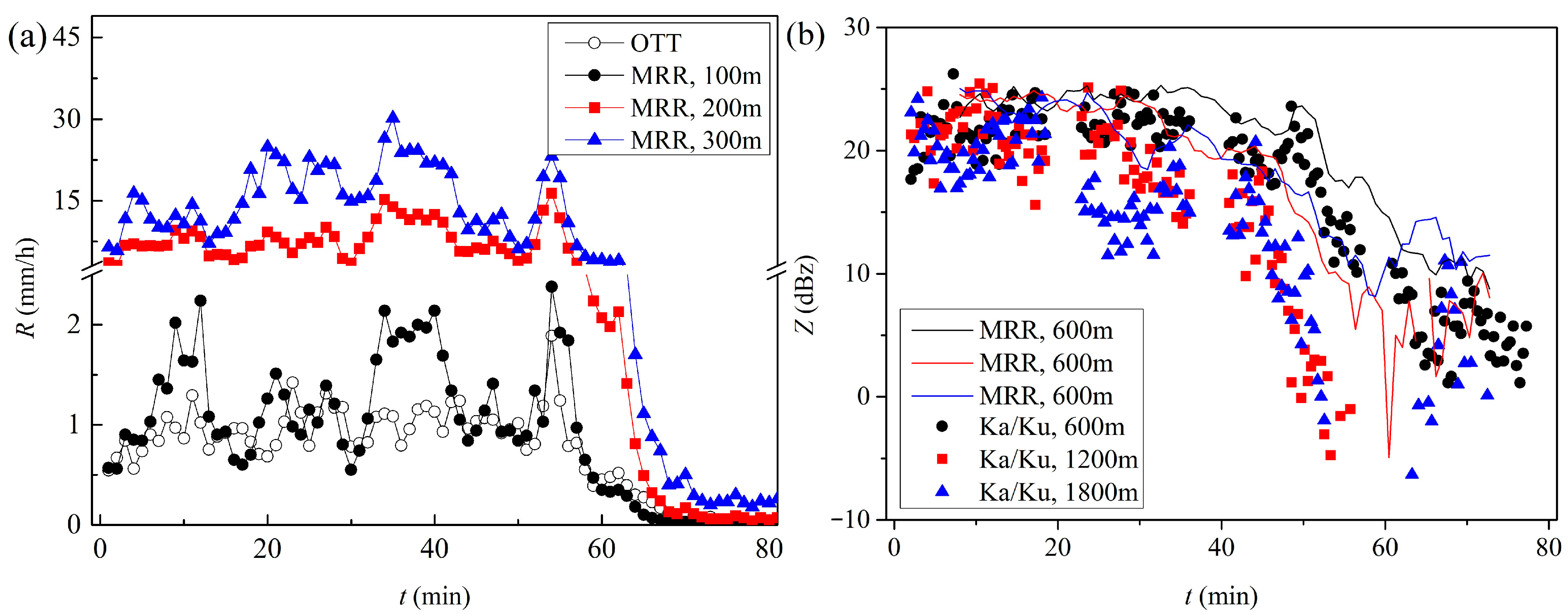
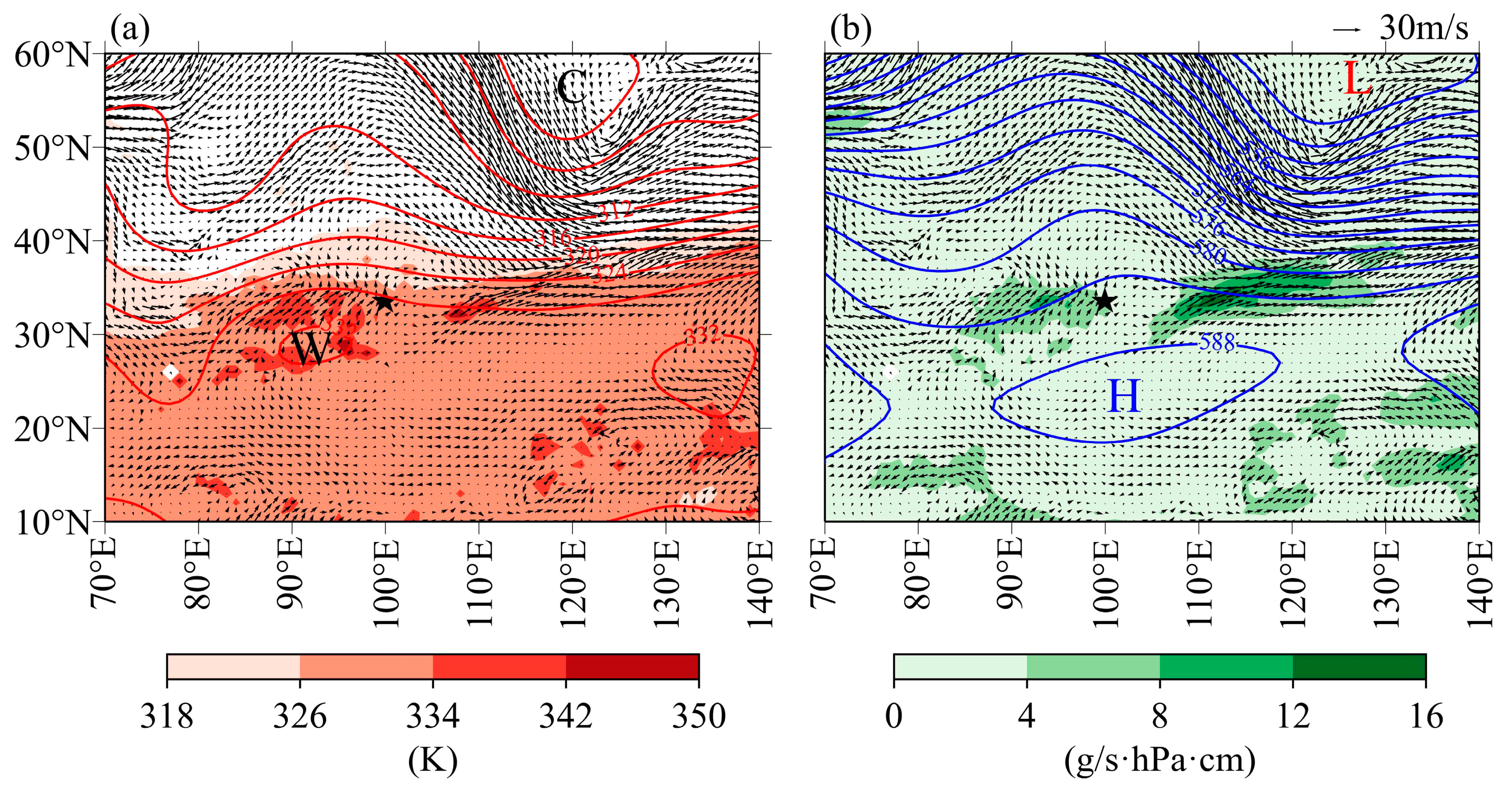
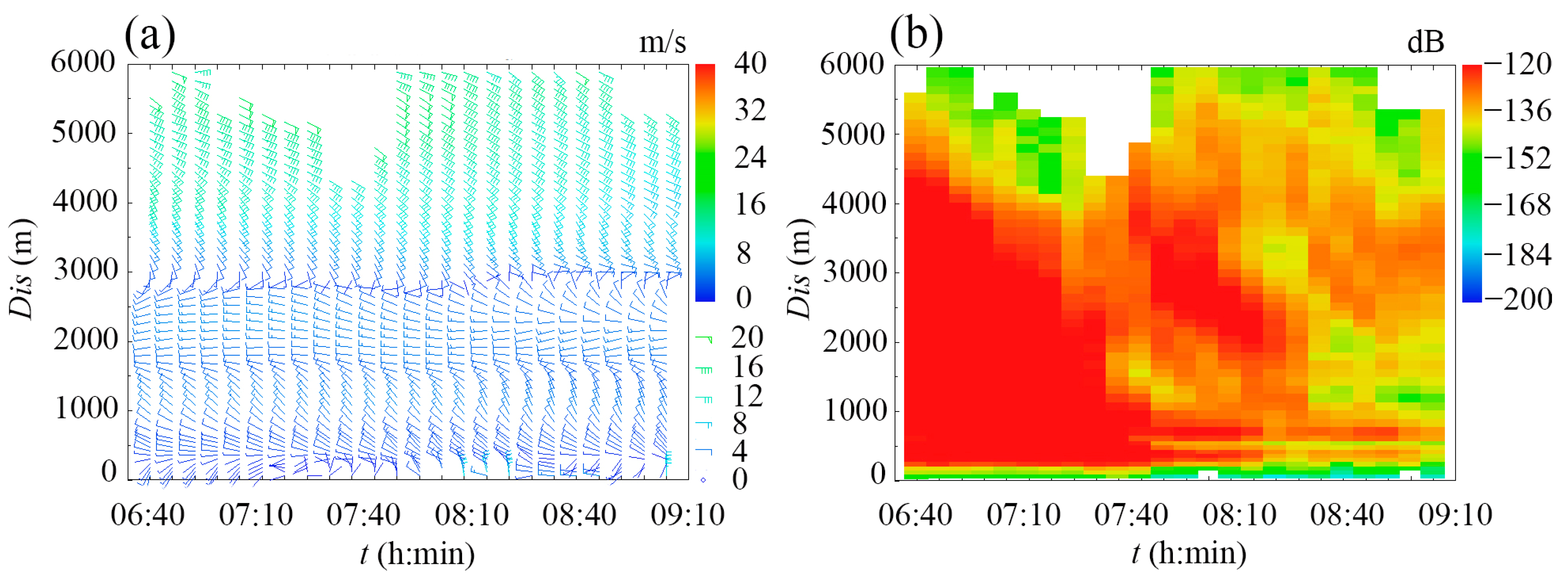
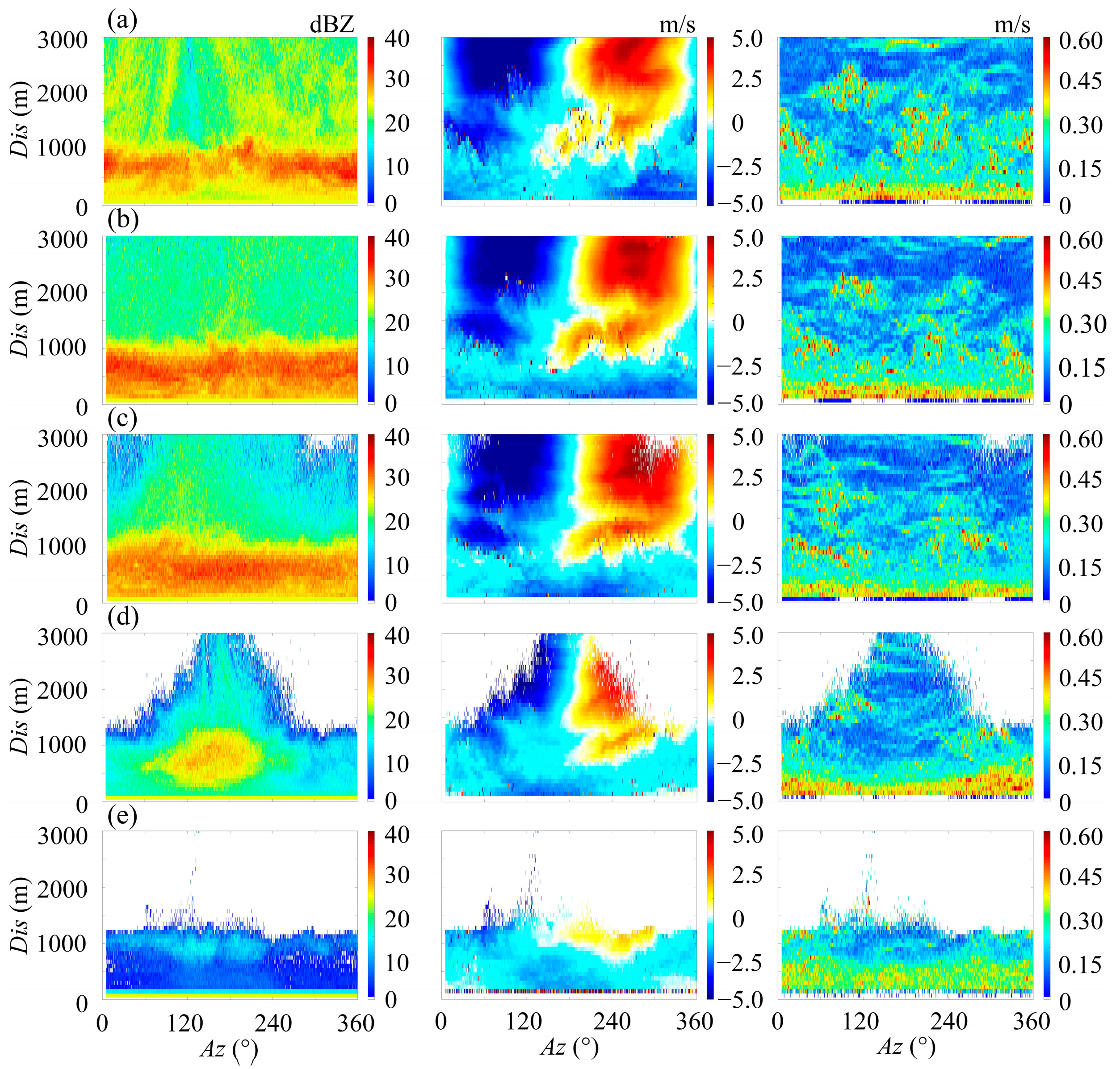
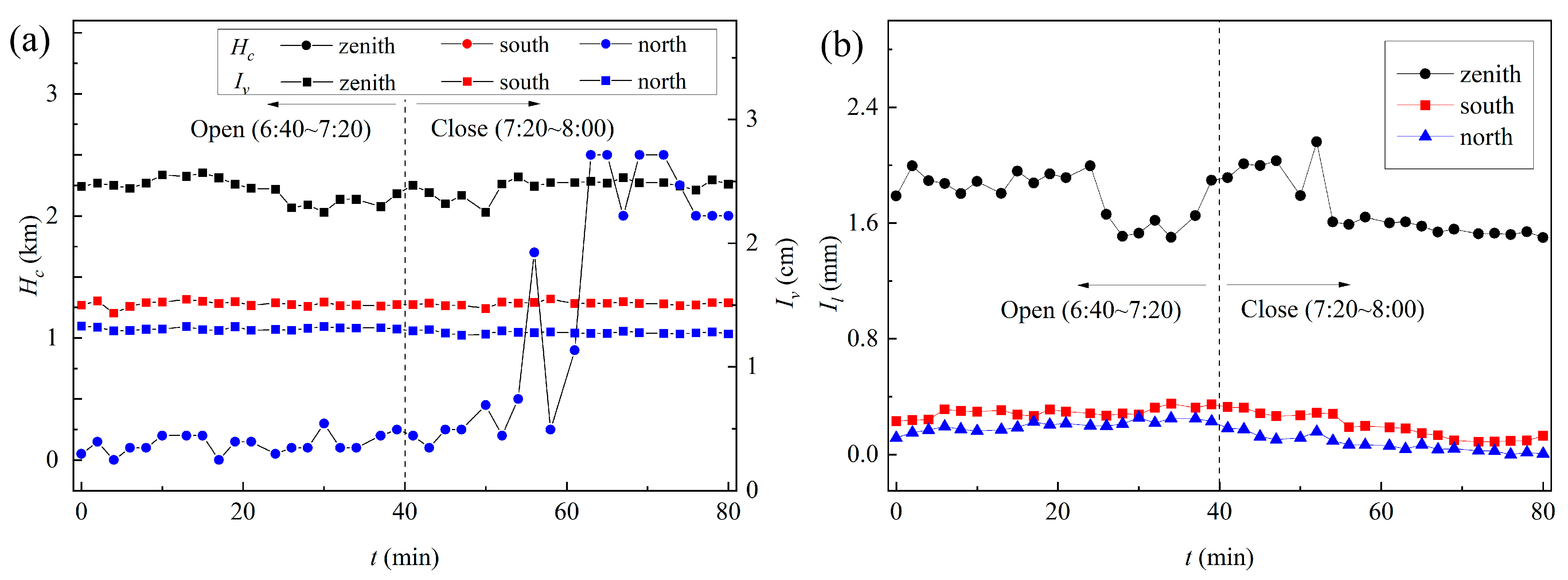
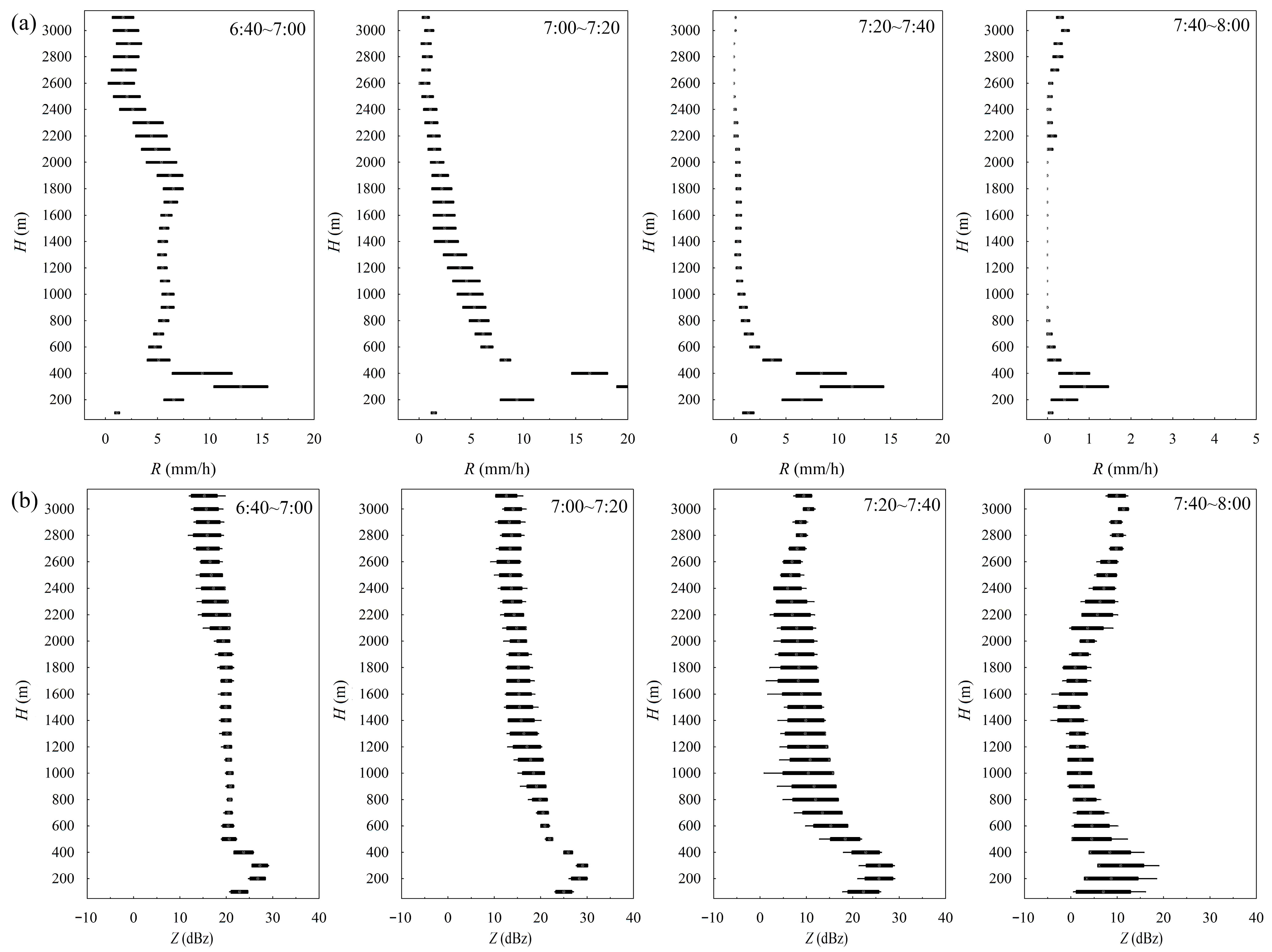
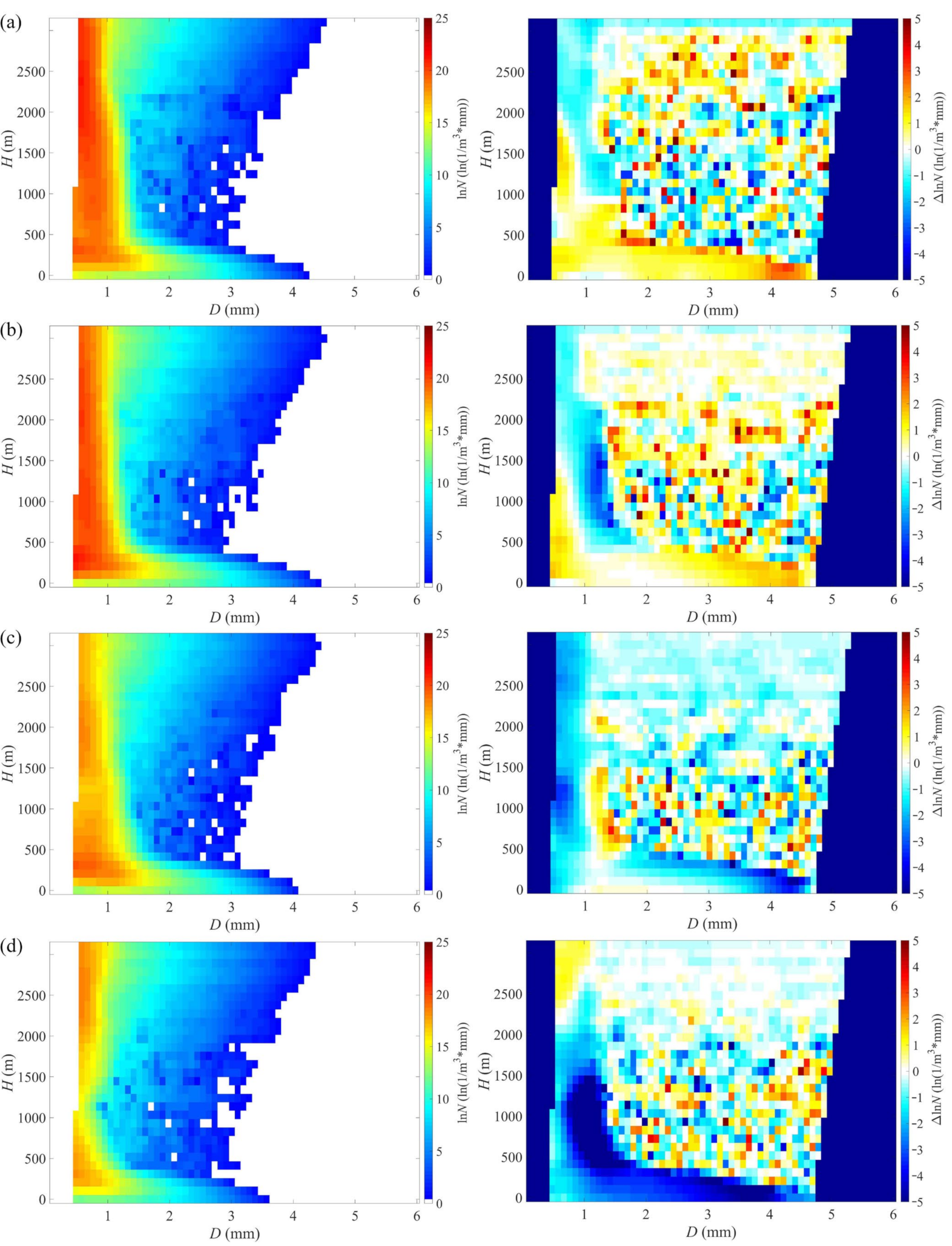
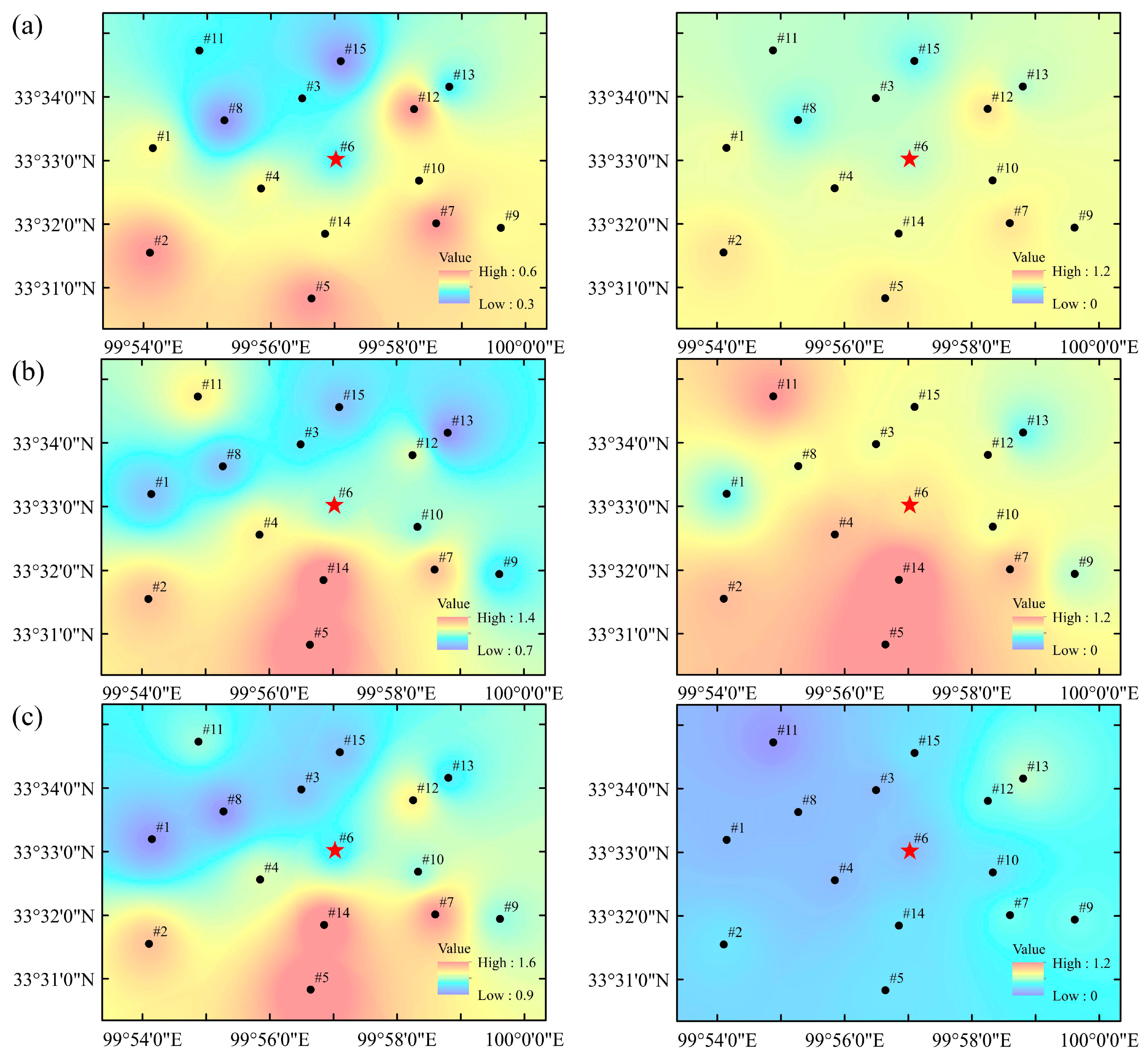
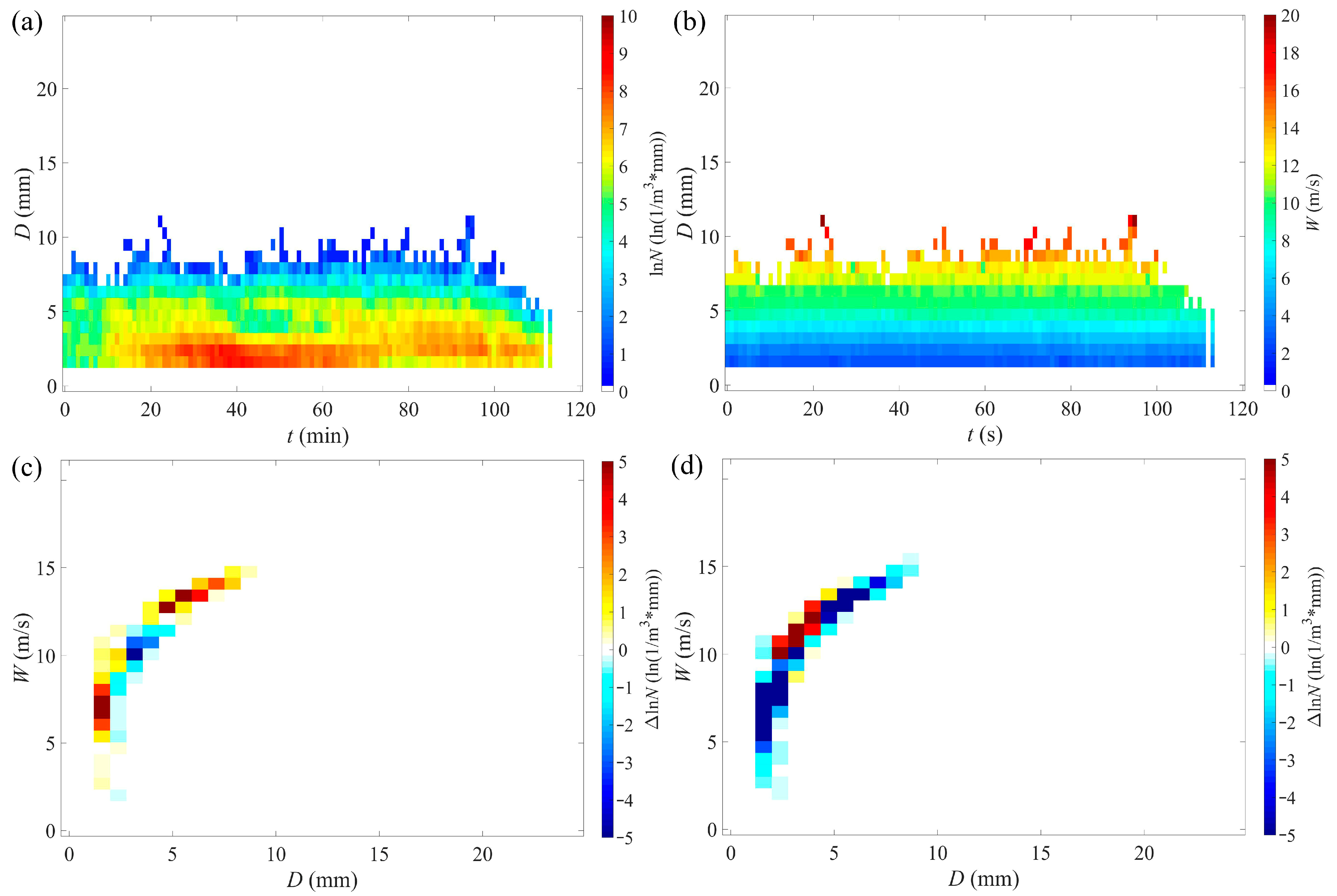
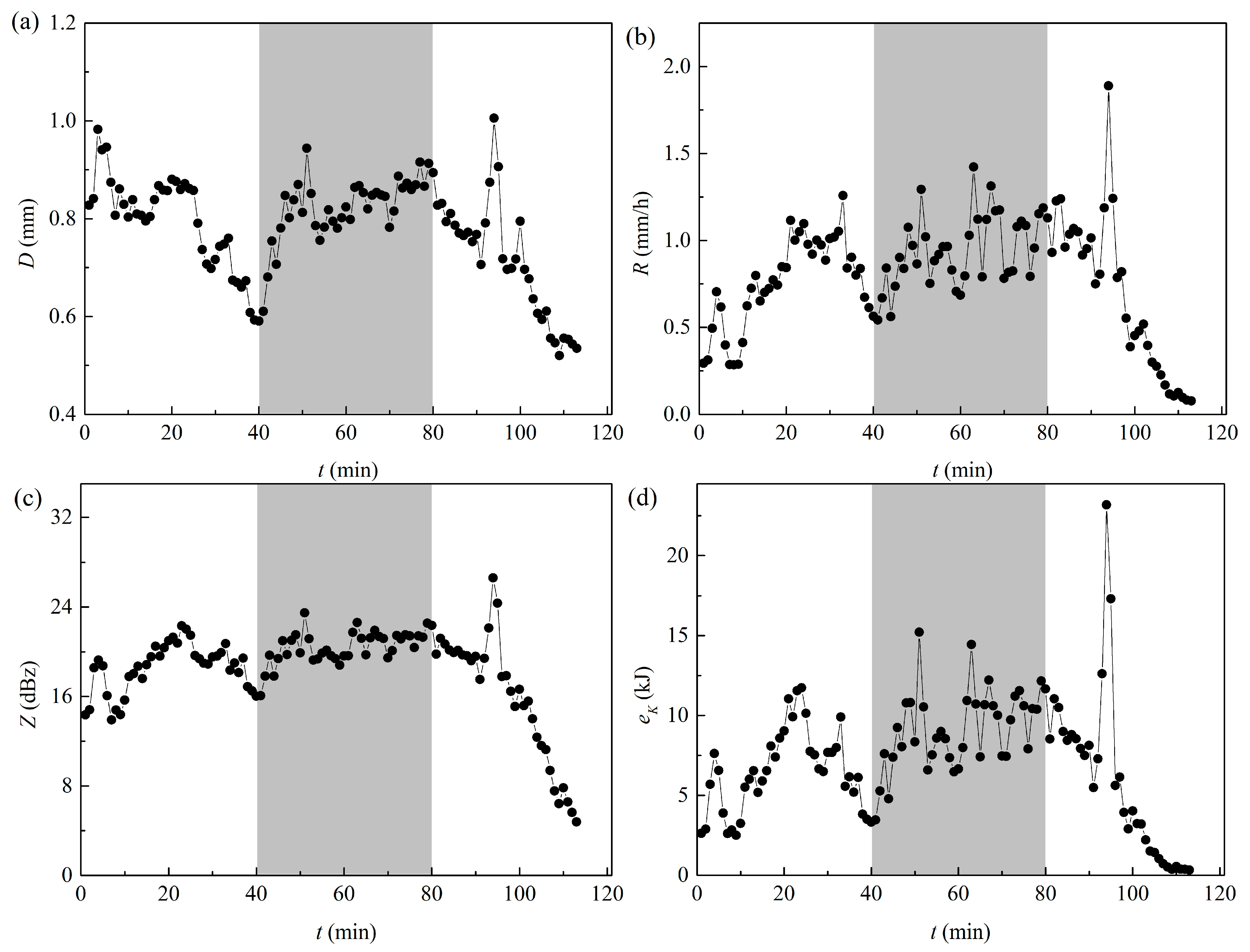
Disclaimer/Publisher’s Note: The statements, opinions and data contained in all publications are solely those of the individual author(s) and contributor(s) and not of MDPI and/or the editor(s). MDPI and/or the editor(s) disclaim responsibility for any injury to people or property resulting from any ideas, methods, instructions or products referred to in the content. |
© 2023 by the authors. Licensee MDPI, Basel, Switzerland. This article is an open access article distributed under the terms and conditions of the Creative Commons Attribution (CC BY) license (https://creativecommons.org/licenses/by/4.0/).
Share and Cite
Shi, Y.; Qiao, Z.; Wang, G.; Wei, J. In Situ Experimental Study of Cloud-Precipitation Interference by Low-Frequency Acoustic Waves. Remote Sens. 2023, 15, 993. https://doi.org/10.3390/rs15040993
Shi Y, Qiao Z, Wang G, Wei J. In Situ Experimental Study of Cloud-Precipitation Interference by Low-Frequency Acoustic Waves. Remote Sensing. 2023; 15(4):993. https://doi.org/10.3390/rs15040993
Chicago/Turabian StyleShi, Yang, Zhen Qiao, Guangqian Wang, and Jiahua Wei. 2023. "In Situ Experimental Study of Cloud-Precipitation Interference by Low-Frequency Acoustic Waves" Remote Sensing 15, no. 4: 993. https://doi.org/10.3390/rs15040993
APA StyleShi, Y., Qiao, Z., Wang, G., & Wei, J. (2023). In Situ Experimental Study of Cloud-Precipitation Interference by Low-Frequency Acoustic Waves. Remote Sensing, 15(4), 993. https://doi.org/10.3390/rs15040993








